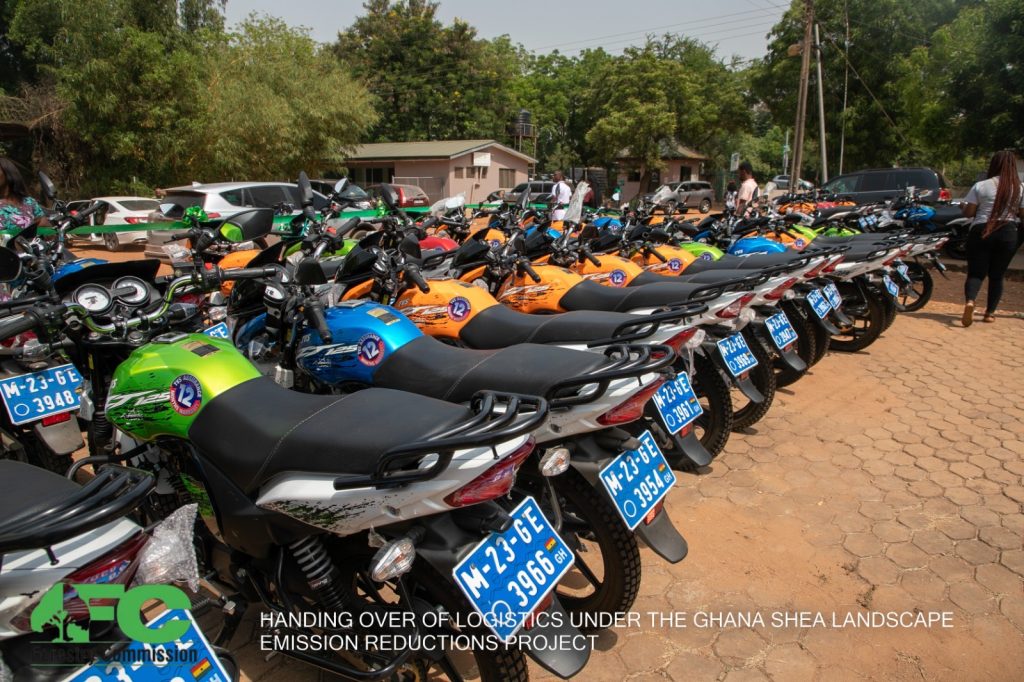Accra, Dec. 31, GNA -The Chief Executive of the Forestry Commission, Mr John Allotey, has handed over essential logistics valued at more than GHS1.82 million under the Ghana Shea Landscape Emission Reductions Project to facilitate effective monitoring and patrol in the landscape.
The items include 42 motorbikes, 22 tricycles, and 3,200 watering cans and are to enable forest protection teams to cover larger areas, respond swiftly to wildfire alarms, convey seedlings and ensure the sustainable management of forest resources, especially the rehabilitated sites.
The items were officially handed over to the Forest Services Division and Wildlife Division.
“With these additions to the Commission’s logistical capabilities, we are better equipped to combat illegal activities that pose a threat to our forests.

“I entreat us all to ensure proper upkeep of the items, deploy them for community use and perform routine maintenance,”Mr Allotey said.
The Ghana Shea Landscape Emission Reductions Project (GSLERP) is one of the offshoots the Country’s REDD+ Strategy launched in 2016 to create a pathway for implementation of projects that reduce emissions from deforestation and degradation whilst sustainably preserving the forest and enhancing forest carbon stocks.
It is being implemented in the Northern Savannah Zone and aimed at restoring degraded savannah forests whilst strengthening livelihoods through enhanced ecosystem services.
The project is funded by the Green Climate Fund with Government and Private Sector Co-finance and implemented by the Forestry Commission and Global Shea Alliance with the accredited entity as the United Nations Development Programme.
The project since its launch in 2022 by the Vice President Dr. Mahamudu Bawumia has made significant strides, including the rehabilitation of 1,427 hectares and 2,350 hectares of degraded forests in 2022 and 2023 respectively under the Modified Taungya System and the establishment of 47 out of the 70 proposed community Shea nurseries with 14,335 grafted shea seedlings planted this year.
It has also led to the establishment of three new Community Resource Management Areas (CREMA) and capacity building for 7 existing CREMAs.
GNA